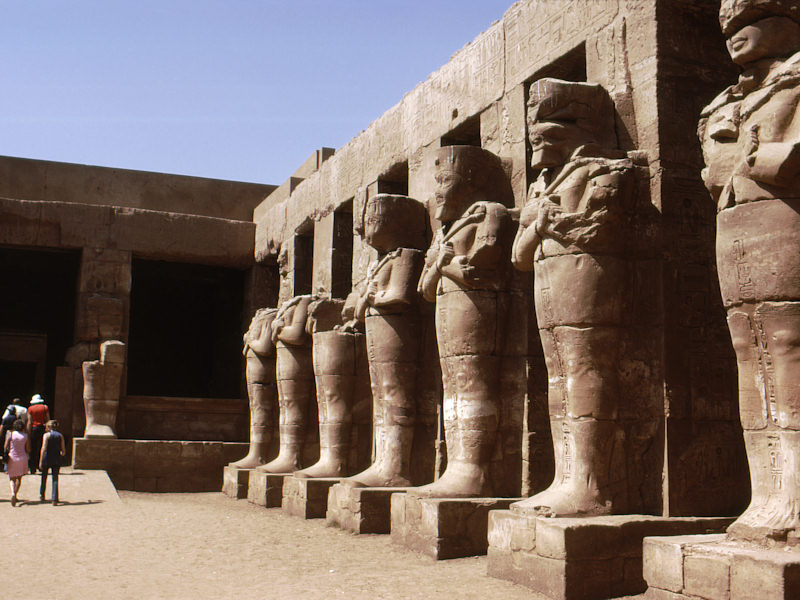Photo
album: "The temple of Karnak"
Fly
over a photo with the mouse to enlarge it
Click
on a photo to open it in a new window
On
the morning of Monday, April 7, 1975, we visit the temple of Karnak, located on
the east bank of the Nile north of the modern city of Luxor. In reality it is a
complex comprising three enclosures gathering several temples. The construction
of this complex spread over more than two millennia, making it the most
extensive religious center of ancient Egypt. Only one of the three enclosures,
the largest, is open to the public. It is the enclosure of Amon-Re in which are
the temple of Amon, the sacred lake, the temple of Ramses II and several other
temples. Karnak was connected to another temple of Amon further south in Luxor,
the ancient Thebes, by a three-kilometre rectilinear roadway lined with
human-headed sphinxes.
 |
We are in front of the causeway,
bordered by sphinxes with a head of a ram, which leads to the portal of
the main entrance of the enclosure of Amon-Re. |
 |
View of the same causeway from the
entrance gate of the Amon-Re enclosure. It extended westward to a jetty on
the edge of a canal.
|
 |
The temple of Amon is made up of
two perpendicular axes. Here we see the great courtyard and the second
portal of the main east-west axis of the temple. This axis has six gates,
or pylons, the north-south secondary axis has four. |
 |
Bas-relief in the temple of Amon. |
 |
Another pylon that has retained
its upper span. |
 |
Room lined with statues. |
 |
Statue of Ramses II, at his feet is
represented his wife. |
 |
We are now in the hypostyle hall,
whose ceiling, now vanished, was supported by 134 columns. The hall is 103
metres long and 53 metres wide. The columns of the central axis have a
height of 23 meters and a circumference at the base of 10 metres which
opens in corolla at the top with a circumference of 15 metres. The lateral
columns are 15 metres high and have a circumference of about eight metres. |
 |
The top of the columns blossoms
into papyrus flowers. |
 |
Bas-relief on one of the walls of
the temple. |
 |
Archaeologists at work. |
 |
The temple visit continues. |
 |
Obelisk of Queen Hatshepsut. |
 |
Seated statue.
|
 |
On each of the two columns we see
through this portal are represented, respectively, a lotus flower and a
papyrus flower. |
 |
Bas-reliefs. |
 |
Upper part of an obelisk lying
down. |
 |
The god Khepri represented in the
form of a scarab. |
 |
The sacred lake. |
Go
back
.
.
.
.
.
.
.

















